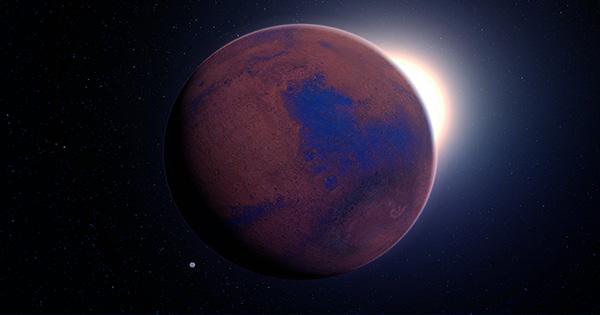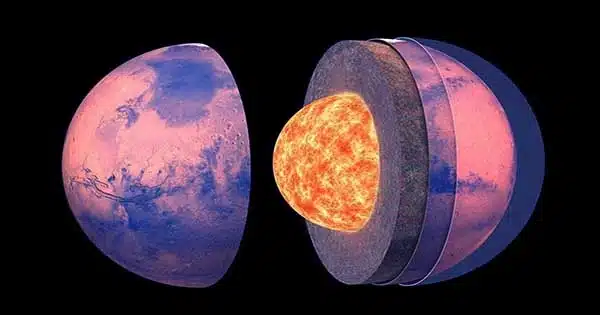Mars’ crust, its outermost planetary layer, is substantially thicker than the Earth’s crust or even the Moon’s crust. This is according to the most recent study, which looked at the internal features of Mars using quake data acquired by NASA’s InSight mission over the course of four years.
Last year, the strongest Marsquake was detected, which is currently assessed to be a 4.6-magnitude tremor. It emitted seismic waves that penetrated the Martian crust and went deep inside the planet. Scientists used vibrations that traveled along the Martian surface, circling the planet up to three times, to calculate the thickness of the crust.

According to the data, the crust is 42 to 56 kilometers (26 to 35 miles) thick on average. It is around 10 kilometers (6 miles) thickest inside the Isidis impact basin. The Tharsis province has the thickest crust, measuring roughly 90 kilometers (56 miles). The thickness of the Earth’s crust ranges between 21 and 27 kilometers (13 to 17 miles). On average, the crust of a planetary body is thicker than that of the Moon, which was calculated by the Apollo mission seismometers to be between 34 and 43 kilometers (21 to 27 miles) thick.
“This means that the Martian crust is much thicker than that of the Earth or the Moon,” said Doyeon Kim, a geophysicist and senior research scientist at the Institute of Geophysics at ETH Zurich. “We were fortunate to witness this earthquake.” Using the same magnitude of quake that occurred on Mars, we would have difficulties measuring the thickness of the Earth’s crust on Earth. Despite being smaller than Earth, Mars transfers seismic energy more effectively.”
















